The avian world boasts a stunning array of waterfowl, and among these, the King Eider stands out as a particularly majestic and intriguing species. Known for its striking plumage and unique behaviors, this sea duck captivates birdwatchers and researchers alike. This comprehensive guide delves into the fascinating life history, ecology, and conservation status of the King Eider, offering insights for students, animal enthusiasts, and aspiring zoologists.
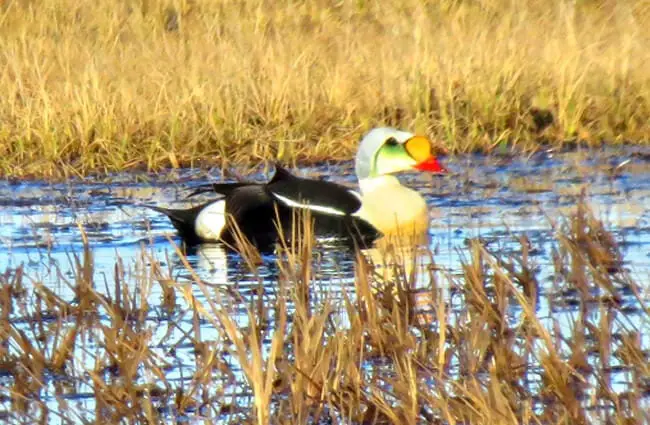
Understanding the King Eider
The King Eider (Somateria spectabilis) is a large sea duck found in Arctic and subarctic regions of the world. Its name derives from the resemblance of the male’s plumage to that of a king, with its distinctive black, white, and grey markings. These ducks are renowned for their resilience, thriving in some of the harshest environments on Earth. They are truly a symbol of the Arctic wilderness.
Physical Characteristics
Males are considerably larger than females, weighing between 1.1 and 1.5 kilograms, while females typically weigh between 0.8 and 1.1 kilograms. The male boasts a striking color pattern: a black head and breast, a prominent white patch on the forehead and sides of the neck, and a grey body. The female is a mottled brown, providing excellent camouflage during nesting. Both sexes have a distinctive bluish beak and legs. A unique feature is the inflatable throat sac of the male, which is used during displays to attract mates and defend territory.
Habitat and Distribution
King Eiders breed primarily along the Arctic coasts of North America, Europe, and Asia. Their breeding grounds include tundra habitats with access to freshwater ponds and coastal areas. During the winter months, they migrate southwards, congregating in large flocks in sheltered coastal bays and inlets. Key wintering areas include the Bering Sea, the North Sea, and the coasts of Alaska, Canada, and Russia.
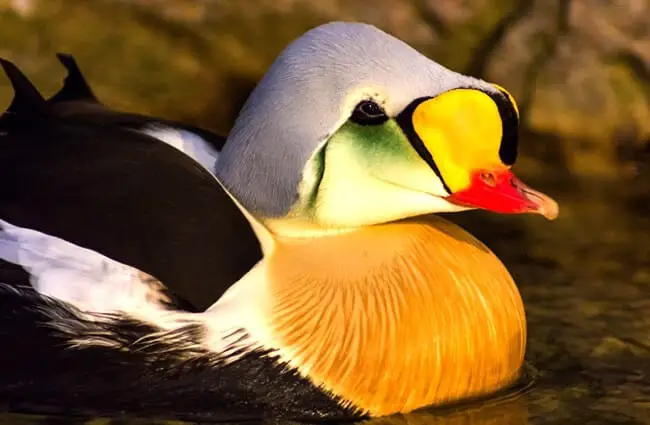
Finding King Eiders in the Wild
For birdwatchers hoping to spot King Eiders, the best time to visit is during the winter months when they gather in large flocks. Look for sheltered coastal bays and inlets. Binoculars and a spotting scope are essential for observing these ducks from a distance. Respect their habitat and maintain a safe distance to avoid disturbing them.
Diet and Foraging Behavior
King Eiders are primarily bottom feeders, diving underwater to forage for crustaceans, mollusks, and other invertebrates. They have specialized tongues and palates that allow them to effectively scrape and manipulate food from the seabed. During the breeding season, their diet shifts to include aquatic insects and vegetation. They are remarkably efficient divers, capable of remaining underwater for extended periods.
Ecosystem Role
As a key component of Arctic marine ecosystems, King Eiders play a crucial role in nutrient cycling and energy transfer. They serve as prey for Arctic foxes, skuas, and other predators. Their foraging activities also help to maintain the health and diversity of benthic communities.
Mating and Reproduction
King Eiders are generally monogamous, forming pair bonds that can last for several years. The breeding season begins in the spring, with elaborate courtship displays involving vocalizations, head bobbing, and wing flapping. Males use their inflatable throat sacs to produce a loud, booming call that attracts females.
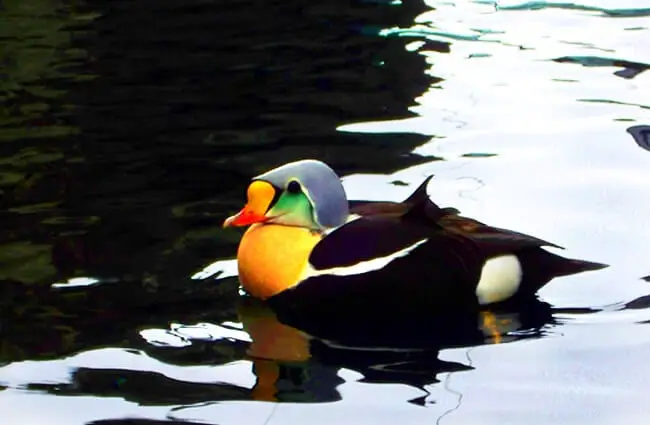
Nesting and Chick Rearing
Females construct nests on the ground, typically in areas with dense vegetation near freshwater ponds. Nests are made of down feathers and vegetation, providing insulation for the eggs. A typical clutch consists of 4 to 7 eggs, which are incubated by the female for approximately 23 to 25 days. Chicks are precocial, meaning they are able to swim and forage shortly after hatching. The female provides parental care for several weeks, protecting the chicks from predators and guiding them to foraging areas.
Evolutionary History
The evolutionary history of King Eiders, like that of other sea ducks, is still being investigated, but fossil evidence suggests that the lineage dates back to the Pliocene epoch. They are closely related to other eider species, such as the Common Eider and Spectacled Eider. Genetic studies have revealed that King Eiders have undergone significant population expansions and contractions in response to glacial cycles and climate change.
King Eider and Human Interaction
Historically, King Eiders were heavily hunted for their down feathers, meat, and eggs. While hunting pressure has decreased in many areas, they still face threats from oil and gas development, pollution, and climate change. In some cultures, King Eiders hold symbolic significance and are featured in traditional art and folklore.
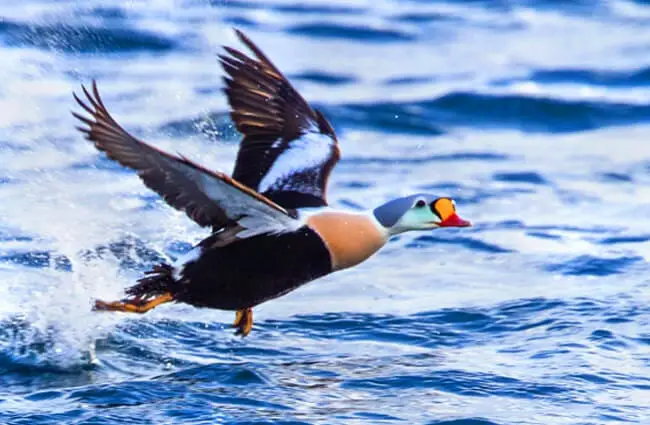
Conservation Status
The King Eider is currently listed as Near Threatened by the International Union for Conservation of Nature (IUCN). Population declines have been observed in several regions, particularly in the eastern Arctic. Conservation efforts include habitat protection, oil spill prevention, and sustainable harvest management.
Caring for King Eiders in Captivity
For zookeepers caring for King Eiders, providing a spacious enclosure with both land and water areas is essential. The enclosure should include areas for foraging, nesting, and resting. The diet should consist of a variety of aquatic invertebrates, fish, and vegetation. Regular monitoring of health and behavior is crucial. It is vital to avoid overcrowding and provide opportunities for natural behaviors, such as diving and foraging. Maintaining water quality is also critical to prevent disease.
Interesting Facts
- The inflatable throat sac of the male King Eider can be inflated to the size of a grapefruit.
- King Eider down is among the warmest and most valuable waterfowl down in the world.
- These ducks can dive to depths of up to 30 meters in search of food.
- They are capable of flying at speeds of up to 80 kilometers per hour.
- King Eiders often form large rafts of thousands of individuals during the winter months.
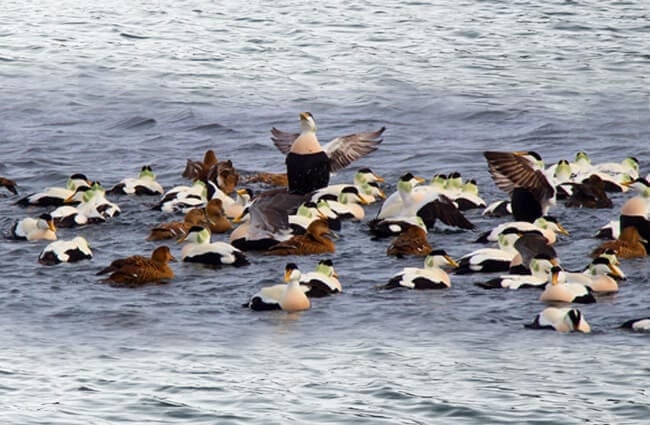
The King Eider is a testament to the resilience and beauty of Arctic wildlife. Understanding its life history, ecology, and conservation challenges is essential for ensuring its survival in a rapidly changing world. By appreciating this magnificent species, we can inspire greater efforts to protect the fragile ecosystems it calls home.
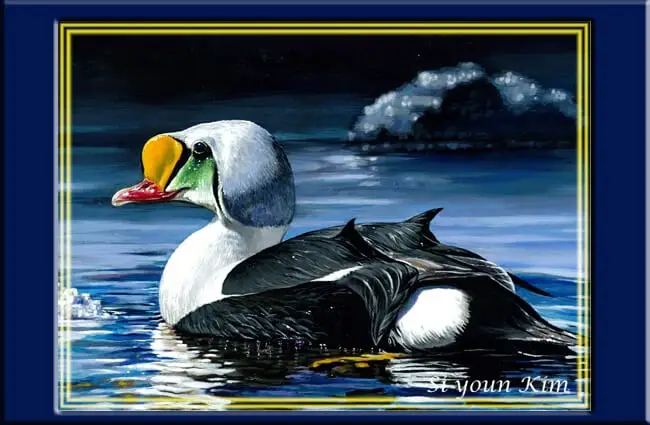

![Red Angus Closeup of a beautiful Red Angus cowPhoto by: U.S. Department of Agriculture [pubic domain]https://creativecommons.org/licenses/by/2.0/](https://animals.net/wp-content/uploads/2020/03/Red-Angus-4-238x178.jpg)




![Red Angus Closeup of a beautiful Red Angus cowPhoto by: U.S. Department of Agriculture [pubic domain]https://creativecommons.org/licenses/by/2.0/](https://animals.net/wp-content/uploads/2020/03/Red-Angus-4-100x75.jpg)

